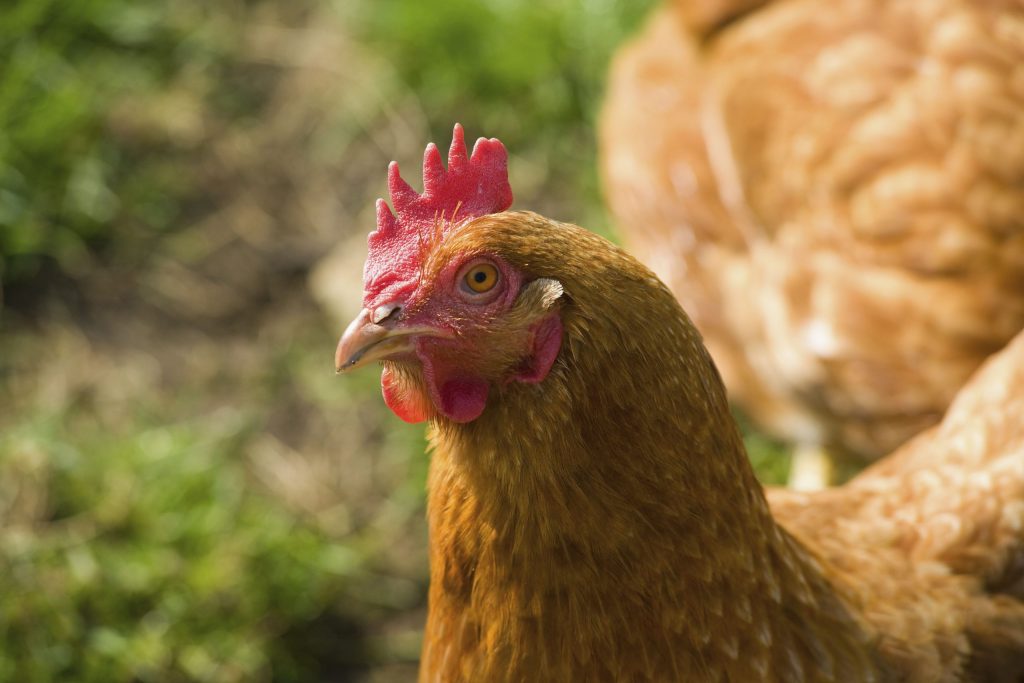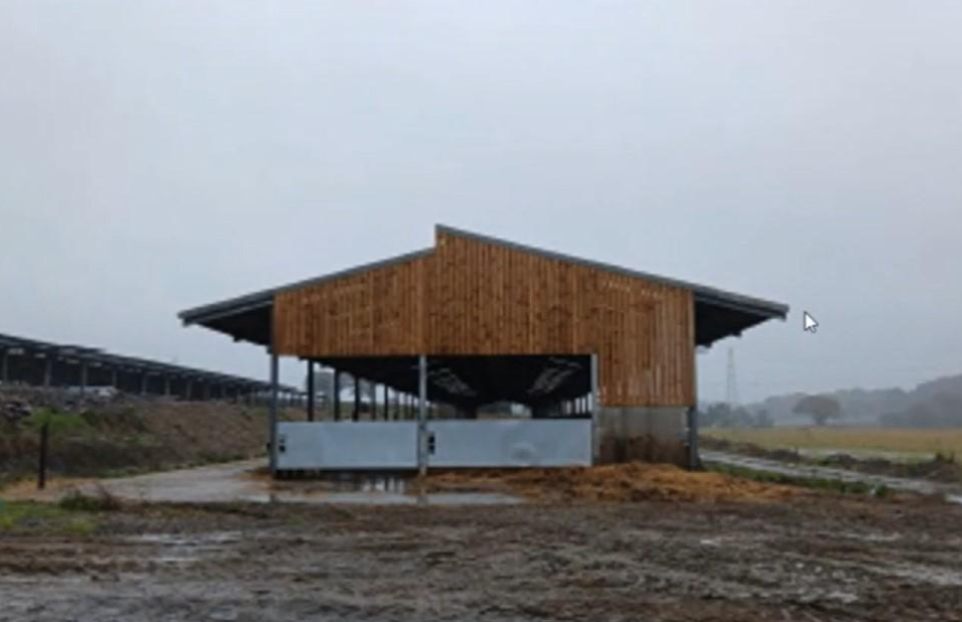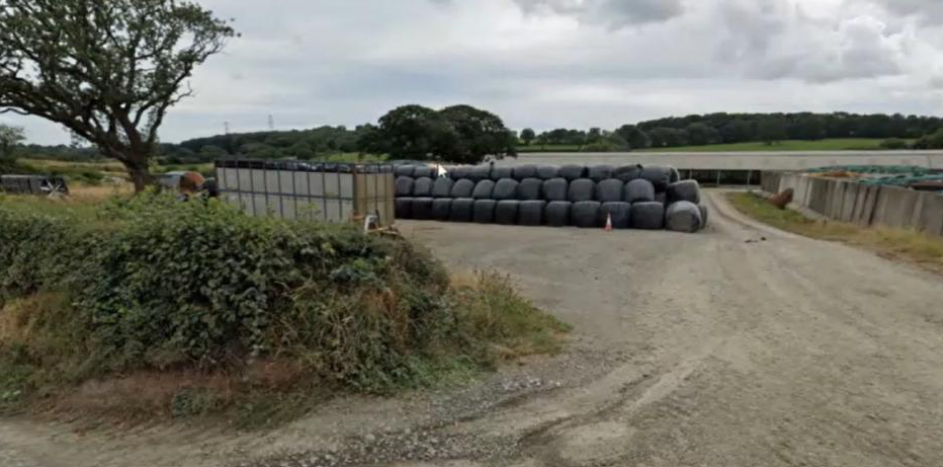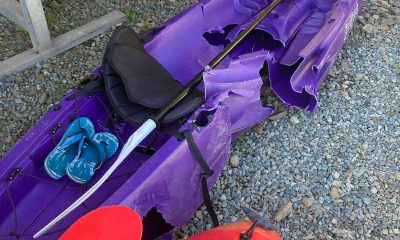Farming
Spotlight on ammonia reduction strategies for Welsh poultry producers

A WELSH study has refocused attention on strategies for reducing ammonia emissions in the poultry sector, with farmers urged to adopt measures including good ventilation and litter and manure management protocols to lower levels.
A three-year European Innovation Partnership (EIP) Wales trial on two broiler farms looked specifically at the role additives may have in reducing emissions by improving gut health and flock performance.
The study produced no evidence that these were effective for this purpose – similar levels of ammonia were recorded in the control and treatment houses.
But project manager Jason Gittins, technical director for livestock at ADAS, says there are a number of other measures that farmers can put in place to tackle emissions.
Ammonia is a component of urea, which is excreted in poultry faeces; when that manure is exposed to air and to moisture, the gas is released.
Agriculture is a major source of ammonia, accounting for 87% of UK emissions in 2019; of this, 14% came from poultry production.
“Ammonia gas is a harmful gas to both poultry and poultry workers and excessive nitrogen deposition resulting from ammonia emissions also damages the environment,’’ warns Mr Gittins.
Here, he gives his advice on how poultry farmers can reduce those emissions.
Ventilation
Poorly ventilated sheds will result in wet litter, which allows more ammonia to be released into the air. The use of effective ventilation to optimise the in-house environment, and preventing condensation can increase litter dry matter content and so reduce ammonia emissions.
Indirect heating systems heat the shed without the additional carbon dioxide and water vapour produced by direct gas heating systems, Mr Gittins explains.
“As a result, litter condition is often drier, which makes conditions less favourable for the production of ammonia,’’ he points out.
Ammonia scrubbing systems
These systems typically pass exhaust air from the house through a liquid to capture the ammonia; the air released to the atmosphere then has a lower ammonia content. Mr Gittins says reports have indicated that reductions in ammonia emissions of around 80% are possible using scrubbing systems, but the capital and operating costs are high.
Correct diet formulation
Diets should be formulated based on amino acid requirements, rather than crude protein, Mr Gittins advises.
“Diet formulation should change throughout the flock cycle to ensure that the nutrient supply is closely matched to the birds’ ammonia acid and other nutrient requirements.’’
Improvements in feed utilisation and feed conversion ratio (FCR) provide both environmental and financial benefits.
Correct removal and storage of soiled bedding
Manures should be contained in covered stores on impermeable surfaces. If field heaps are used, the surface area should be as small as possible: ‘A’ shaped, as this will reduce emissions, says Mr Gittins.
“A key issue is that wet poultry manure and litter can lead to higher emissions of ammonia and so the priority is to keep them as dry as possible, both during housing and afterwards.
“This can also increase its value per tonne as a fertiliser and reduce haulage costs and odour risks.’’
Manure applications should follow normal good practice, he adds.
“This should include avoiding spreading during frost, snow and heavy rain and taking account of soil conditions at the time.
“For liquid organic manures, precision spreading methods are preferable to splash-plate systems.’’
In free-range egg production, the move to multi-tier systems, rather than single-tier, is consistent with reducing ammonia, because of belt clean-out and frequent manure removal.
Preventing puddling around drinkers
Keeping litter dry is key to reducing ammonia levels. Drinkers should be managed to prevent spillages – any leaks need to be identified and quickly resolved.
“Nipple drinker systems should be adopted, as these allow better management of water intake and reduce water wastage,’’ Mr Gittins recommends.
High bird health
Keeping the health status of birds high will help to maintain litter in a drier condition.
“Birds challenged with disease and in poor health often produce wetter manure, which can result in higher ammonia emissions,’’ says Mr Gittins.
EIP Wales, which is delivered by Menter a Busnes, has received funding through the Welsh Government Rural Communities – Rural Development Programme 2014-2020, which is funded by the European Agricultural Fund for Rural Development and the Welsh Government.
Business
Cwm Deri Vineyard Martletwy holiday lets plans deferred

CALLS to convert a former vineyard restaurant in rural Pembrokeshire which had been recommended for refusal has been given a breathing space by planners.
In an application recommended for refusal at the December meeting of Pembrokeshire County Council’s planning committee, Barry Cadogan sought permission for a farm diversification and expansion of an existing holiday operation through the conversion of the redundant former Cwm Deri vineyard production base and restaurant to three holiday lets at Oaklea, Martletwy.
It was recommended for refusal on the grounds of the open countryside location being contrary to planning policy and there was no evidence submitted that the application would not increase foul flows and that nutrient neutrality in the Pembrokeshire Marine SAC would be achieved within this catchment.
An officer report said that, while the scheme was suggested as a form of farm diversification, no detail had been provided in the form of a business case.
Speaking at the meeting, agent Andrew Vaughan-Harries of Hayston Developments & Planning Ltd, after the committee had enjoyed a seasonal break for mince pies, said of the recommendation for refusal: “I’m a bit grumpy over this one; the client has done everything right, he has talked with the authority and it’s not in retrospect but has had a negative report from your officers.”

He said the former Cwm Deri vineyard had been a very successful business, with a shop and a restaurant catering for ‘100 covers’ before it closed two three years ago when the original owner relocated to Carmarthenshire.
He said Mr Cadogan then bought the site, farming over 36 acres and running a small campsite of 20 spaces, but didn’t wish to run a café or a wine shop; arguing the “beautiful kitchen” and facilities would easily convert to holiday let use.
He said a “common sense approach” showed a septic tank that could cope with a restaurant of “100 covers” could cope with three holiday lets, describing the nitrates issue as “a red herring”.
He suggested a deferral for further information to be provided by the applicant, adding: “This is a big, missed opportunity if we just kick this out today, there’s a building sitting there not creating any jobs.”
On the ‘open countryside’ argument, he said that while many viewed Martletwy as “a little bit in the sticks” there was already permission for the campsite, and the restaurant, and the Bluestone holiday park and the Wild Lakes water park were roughly a mile or so away.
He said converting the former restaurant would “be an asset to bring it over to tourism,” adding: “We don’t all want to stay in Tenby or the Ty Hotel in Milford Haven.”
While Cllr Nick Neuman felt the nutrients issue could be overcome, Cllr Michael Williams warned the application was “clearly outside policy,” recommending it be refused.
A counter-proposal, by Cllr Tony Wilcox, called for a site visit before any decision was made, the application returning to a future committee; members voting seven to three in favour of that.
Farming
Farmers Union of Wales Warns: Labour’s 5G Expansion Risks Rural Blackspots

FUW Joins Landowners in Urgent Call to Pause Controversial Telecoms Reforms
THE FUW (Farmers’ Union of Wales) has warned that rural communities face worsening mobile blackspots and farmers risk losing essential income if the Labour Government expands a telecoms policy blamed for stalling Britain’s 5G rollout.
In a letter to Digital Economy Minister Liz Lloyd, the FUW aligns with landowners, investors, and property experts demanding a halt to Part 2 of the Product Security and Telecommunications Infrastructure (PSTI) Act 2022. Extending the 2017 Electronic Communications Code (ECC) would “entrench failure,” the group argues, sparking more stalled renewals, site losses, and legal battles just as Wales needs swifter rural connectivity.
The 2017 reforms empowered operators to cut mast rents—often by 90%—from hosts like farmers, councils, and NHS trusts. Far from boosting rollout, they’ve ignited over 1,000 tribunal cases since 2017, versus 33 in the prior three decades. Rural goodwill has eroded, with hosts now eyeing exits.
“Every lost mast isolates households, schools, and businesses,” the FUW states. “No public subsidy can fix this systemic damage.”
A survey of 559 hosts (via NFU, CLA, BPF) shows:
- 35% considering full withdrawal.
- 70% of expired lease holders facing operator legal threats.
Landowner Ted Hobbs in New Tredegar shares the pain: “My 1995 Vodafone lease was £3,500 yearly, renewed in 2010 at the same rate. It expired May 2025—now they demand a slash, backed by the Code. This is confiscation, not partnership.”
Labour’s push forward—despite earlier opposition and a critical consultation—ignores these red flags.
FUW President Ian Rickman adds: “Farmers hosted masts in good faith for rural connectivity. Punishing them with rent cuts sabotages Wales. Halt this now, restore trust, and incentivise real progress.”
The coalition urges ministers to reopen dialogue before deepening rural divides. Wales can’t afford more policy missteps.
Business
Large new development at one of Pembrokeshire’s biggest dairy farms approved

PLANS for a heifer accommodation building and associated works at one of Pembrokeshire’s largest dairy farms, with a milking herd of 2,000 cows, have been given the go-ahead.
In an application recommended for approval at the December 2 meeting of Pembrokeshire County Council’s planning committee, Hugh James of Langdon Mill Farms Ltd sought permission for a 160-metre-long heifer accommodation building, a slurry separation/dewatering building and associated yard areas at 1,215-hectare Langdon Mill Farm, near Jeffreyston, Kilgetty.
A supporting statement through agent Reading Agricultural Consultants said: “The holding currently has a milking herd of approximately 2,000 cows, which are housed indoors for the majority of the year, with dry cows and heifers grazed outdoors when weather and soil conditions permit.
“There has been significant investment in buildings and infrastructure at the farm over the last decade in respect of cattle accommodation, slurry storage, milking facilities, Anaerobic Digestion (AD) plant, feed storage. Recently a calf and weaned calf accommodation buildings were approved by Pembrokeshire County Council with construction almost complete.
“The unit is efficient, achieving yields of more than 10,000 litres/cow/year, with cows being milked three times/day in the 60-point rotary parlour. Langdon Mill Farm currently directly employs 21 full-time, and three part-time staff. Of these, four live on site in the two dwellings opposite the farm, with the remaining staff living in the locality.”

It added: “Although the unit has previously purchased heifers to aid expansion, the farm now breeds most of its own replacements to improve genetics and to minimise the ongoing threat of bovine tuberculosis (bTB).
“Following the completion of the calf and weaned calf accommodation buildings, the farm will be rearing all of the cattle under seven months at Langdon Mill Farm, before being transported off site to be reared at three farms in the local area. At 22-months the in-calf heifers are brought back to the maternity building to calve and then are introduced into the milking herd.”
It said the proposed building would be used by heifers between the ages of 7-22 months, the siting “directly influenced by the adjacent calf and weaned calf buildings, with livestock being moved from one building to the next as they get older”.
Approval was moved by Cllr Brian Hall, seconded by Cllr Danny Young, with Cllr John T Davies also stating his support.
“It’s common sense; the fact we approved a calf-rearing shed, it follows on you need a heifer rearing shed,” he said.
Cllr Davies later said the scheme would also support biodiversity, and, with a decline in milk prices, supporting the large-scale farm was about “safety in numbers”.
Chair Cllr Mark Carter said it was “a pleasure to be supporting the farming industry”.
Members unanimously supported the recommendation of approval.
-

 Crime2 days ago
Crime2 days agoDefendant denies using Sudocrem-covered finger to assault two-month-old baby
-

 Crime1 day ago
Crime1 day agoPembroke rape investigation dropped – one suspect now facing deportation
-

 Crime6 days ago
Crime6 days agoMan denies causing baby’s injuries as police interviews read to jury
-

 News1 day ago
News1 day agoBaby C trial: Mother breaks down in tears in the witness box
-

 Crime2 days ago
Crime2 days agoLifeboat crew member forced to stand down after being assaulted at Milford pub
-

 Crime2 days ago
Crime2 days agoDefendant denies causing injuries to two-month-old baby
-

 Crime2 days ago
Crime2 days agoPembrokeshire haven master admits endangering life after speedboat collision
-

 Crime7 hours ago
Crime7 hours agoMother admits “terrible idea” to let new partner change her baby’s nappies alone


















